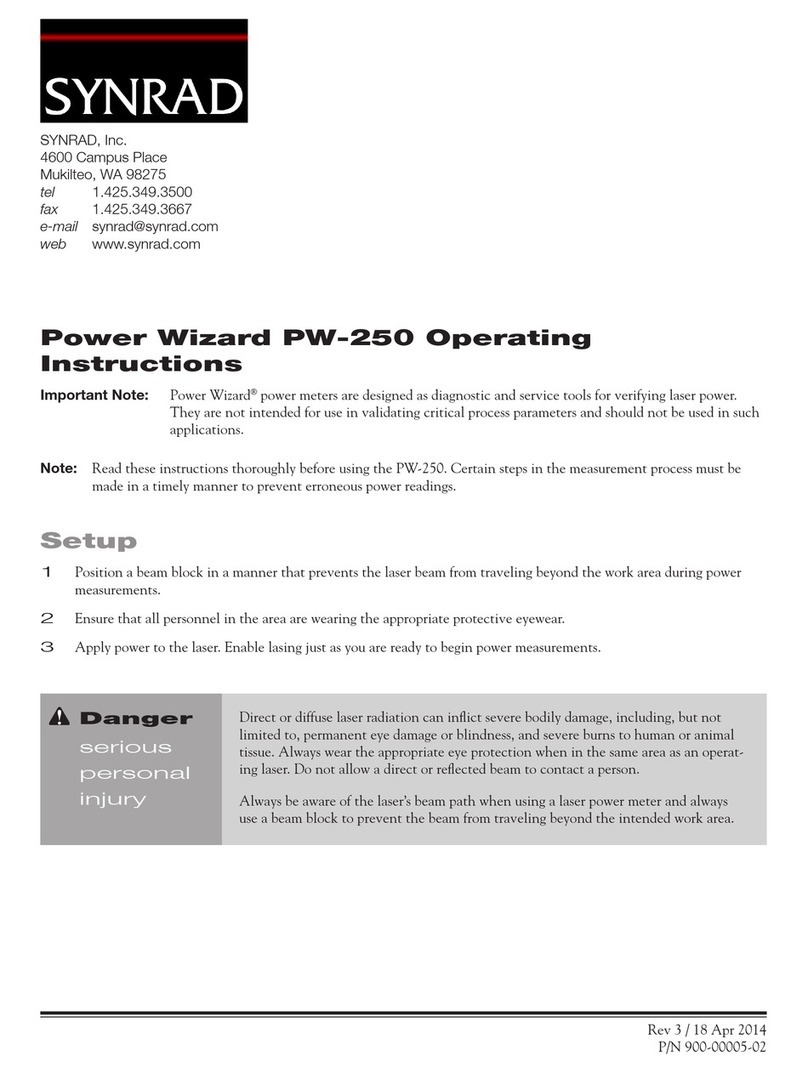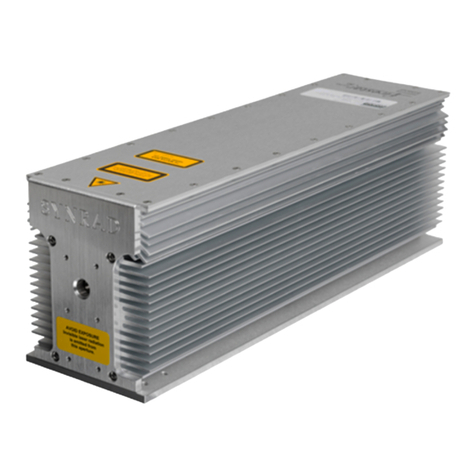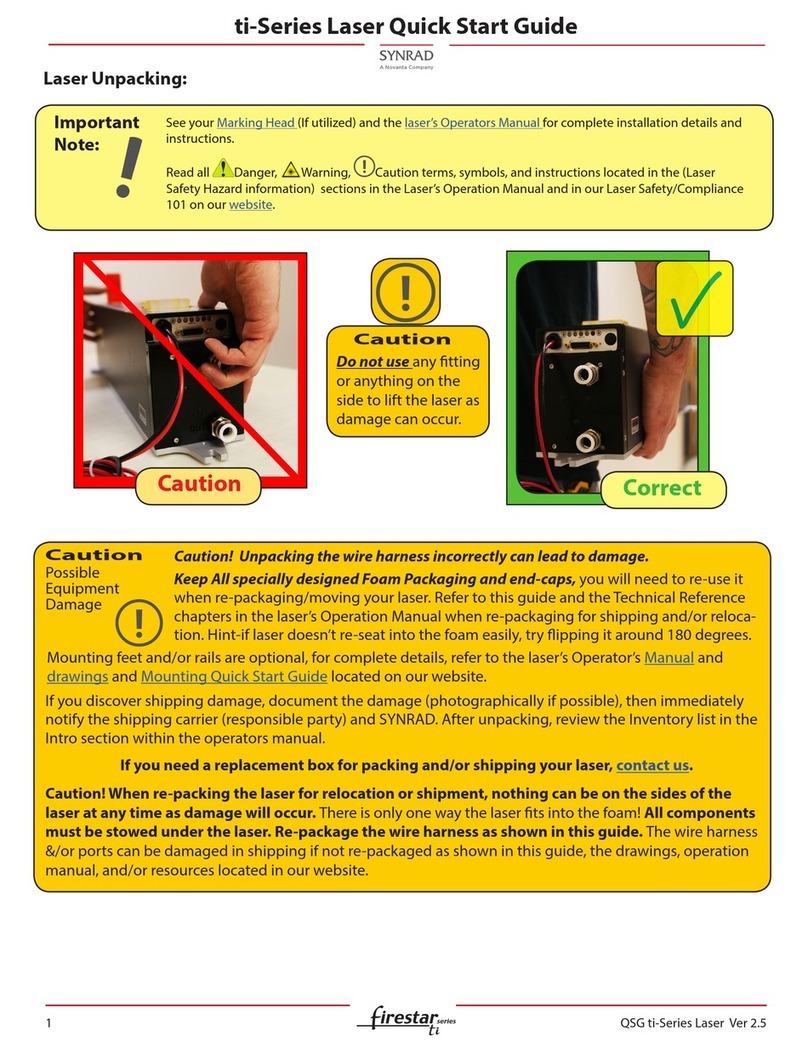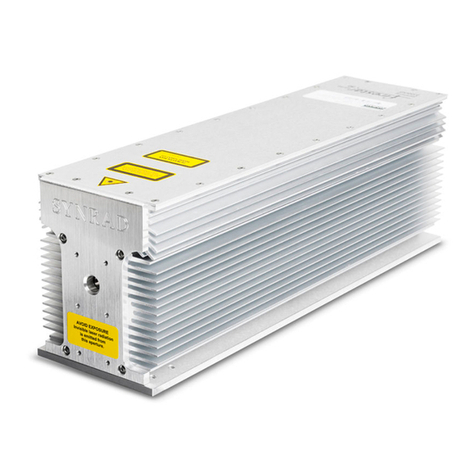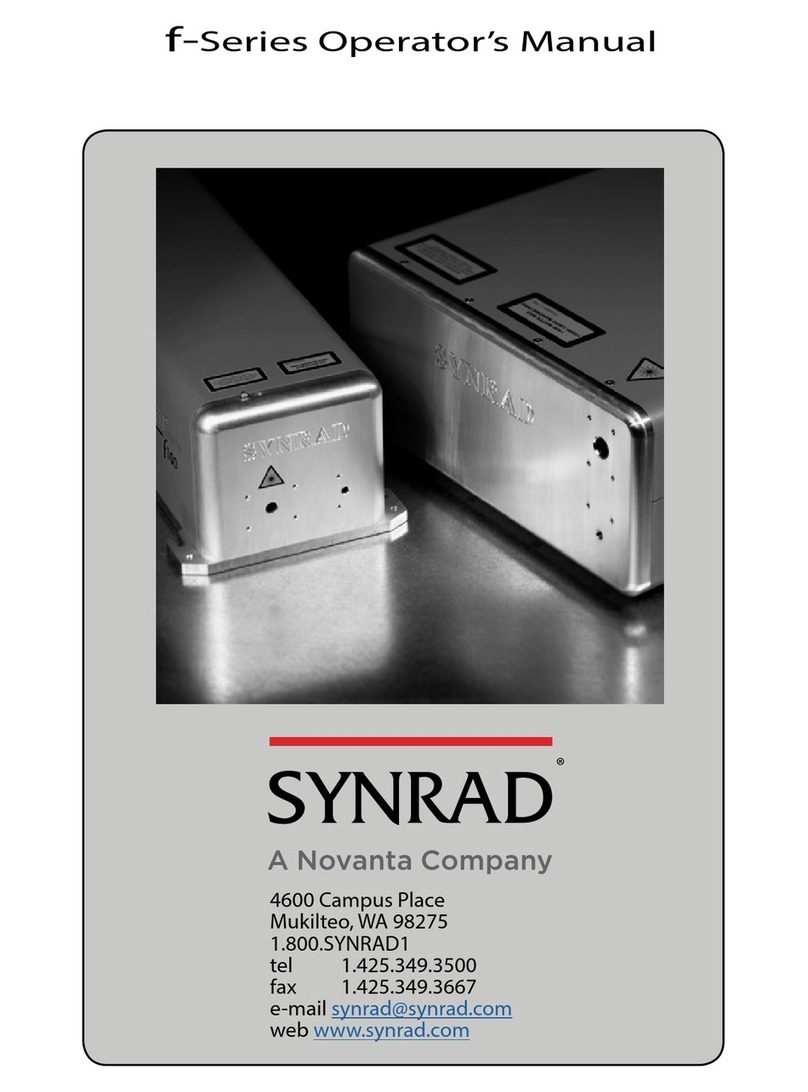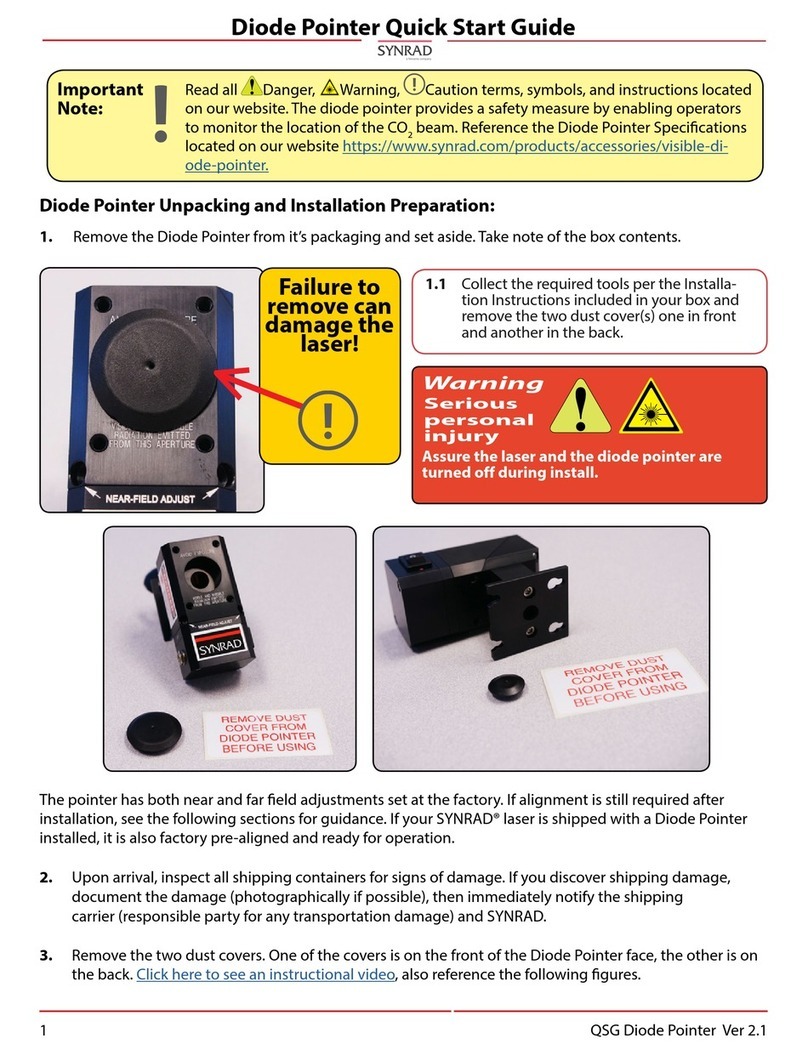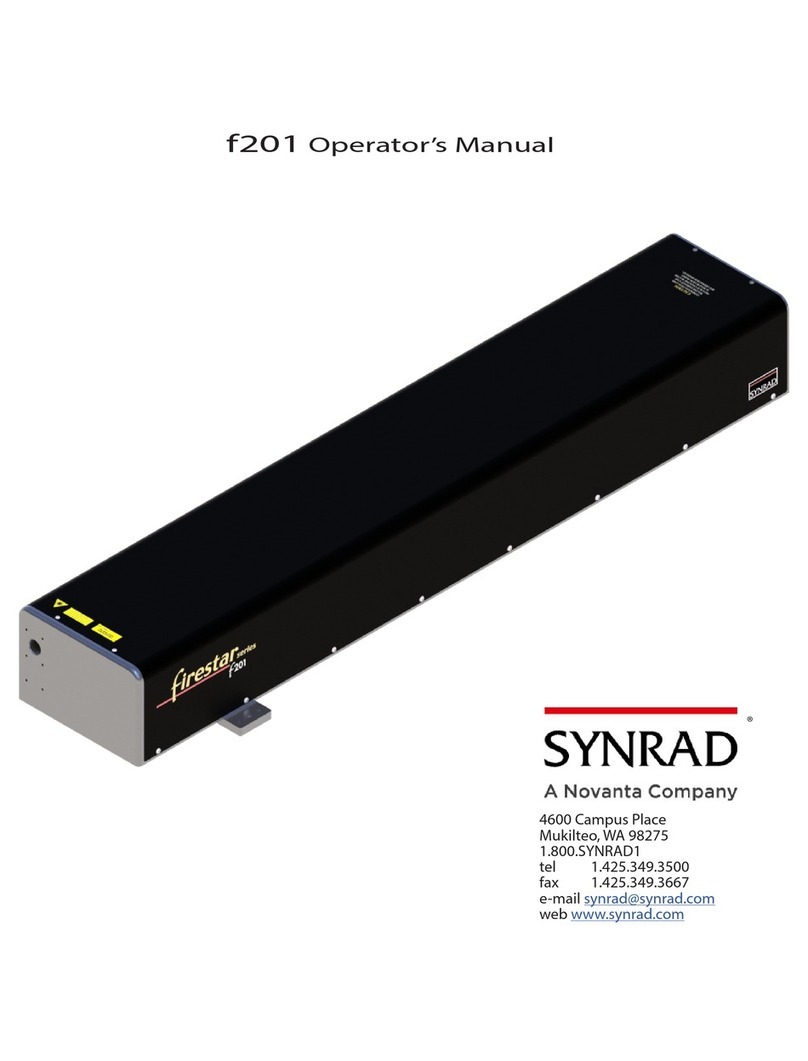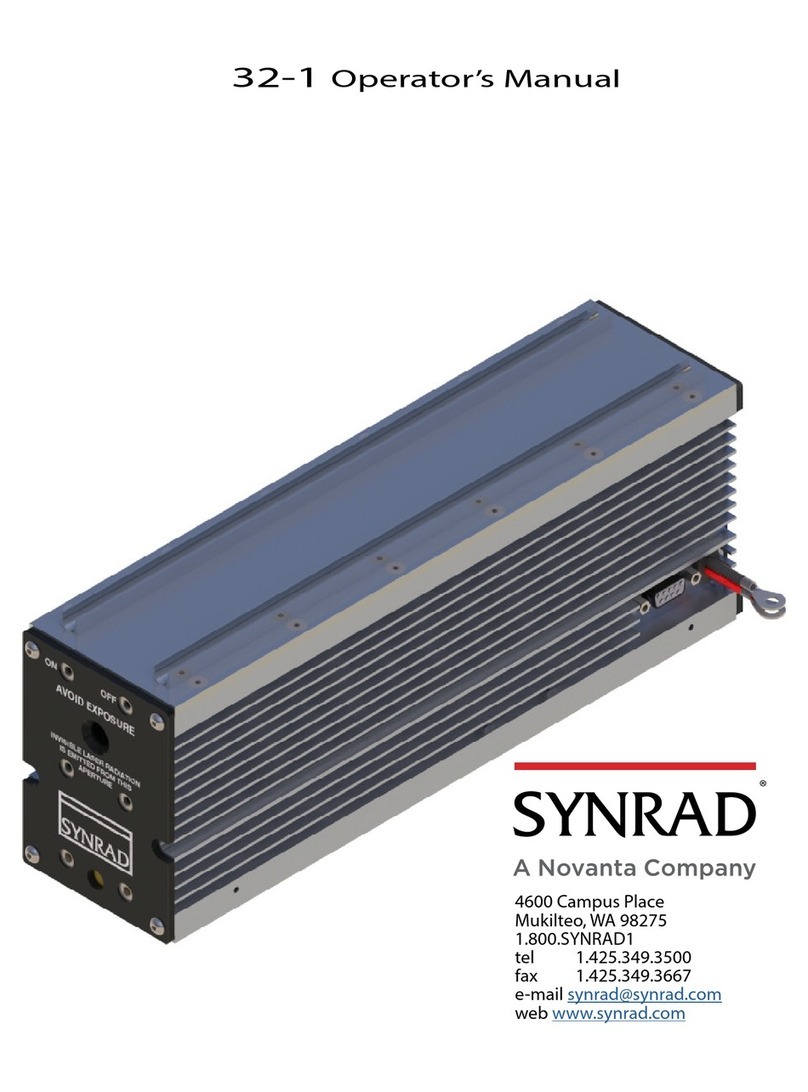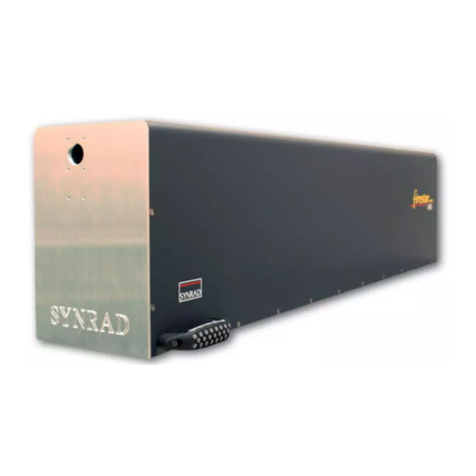
viii Synrad Pulstar p100 operator’s manual
Warranty information
This is to certify that Pulstar p100 lasers are guaranteed by SYNRAD, Inc. to be free of all defects in
materials and workmanship for a period of one year from the date of purchase. This warranty does not ap-
ply to any defect caused by negligence, misuse (including environmental factors), accident, alteration, or
improper maintenance. We request that you examine each shipment within 10 days of receipt and inform
SYNRAD, Inc. of any shortage or damage. If no discrepancies are reported, SYNRAD shall assume the
shipment was delivered complete and defect-free.
If, within one year from the date of purchase, any part of the Pulstar p100 laser should fail to oper-
ate, contact the SYNRAD Customer Service department at 1.800.SYNRAD1 (outside the U.S. call
1.425.349.3500) and report the problem. When calling for support, please be prepared to provide the date
of purchase, model number and serial number of the unit, and a brief description of the problem. When
returning a unit for service, a Return Authorization (RA) number is required; this number must be clearly
marked on the outside of the shipping container in order for the unit to be properly processed. If replace-
ment parts are sent to you, then you are required to send the failed parts back to SYNRAD for evaluation
unless otherwise instructed.
If your Pulstar p100 laser fails within the first 45 days after purchase, SYNRAD, Inc. will pay all shipping
charges to and from SYNRAD when shipped as specified by SYNRAD Customer Service. After the first 45
days, SYNRAD will continue to pay for the costs of shipping the repaired unit or replacement parts back
to the customer from SYNRAD. The customer, however, will be responsible for shipping charges incurred
when sending the failed unit or parts back to SYNRAD or a SYNRAD Authorized Distributor. In order to
maintain your product warranty and to ensure the safe and efficient operation of your Pulstar p100 laser,
only authorized SYNRAD replacement parts can be used. This warranty is void if any parts other than
those provided by SYNRAD, Inc. are used.
SYNRAD, Inc. and SYNRAD Authorized Distributors have the sole authority to make warranty state-
ments regarding SYNRAD products. SYNRAD, Inc. and its Authorized Distributors neither assumes nor
authorizes any representative or other person to assume for us any other warranties in connection with the
sale, service, or shipment of our products. SYNRAD, Inc. reserves the right to make changes and improve-
ments in the design of our products at any time without incurring any obligation to make equivalent
changes in products previously manufactured or shipped. Buyer agrees to hold SYNRAD harmless from
any and all damages, costs, and expenses relating to any claim arising from the design, manufacture, or use
of the product, or arising from a claim that such product furnished Buyer by SYNRAD, or the use thereof,
infringes upon any Patent, foreign or domestic.


